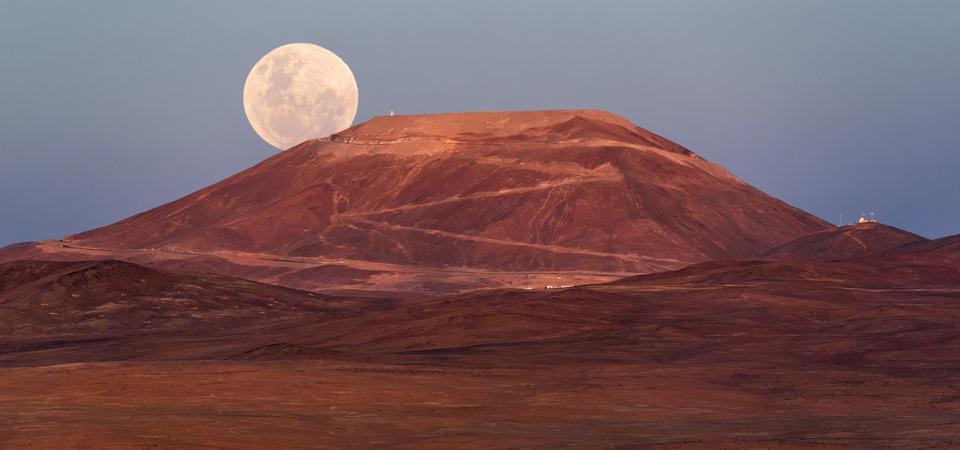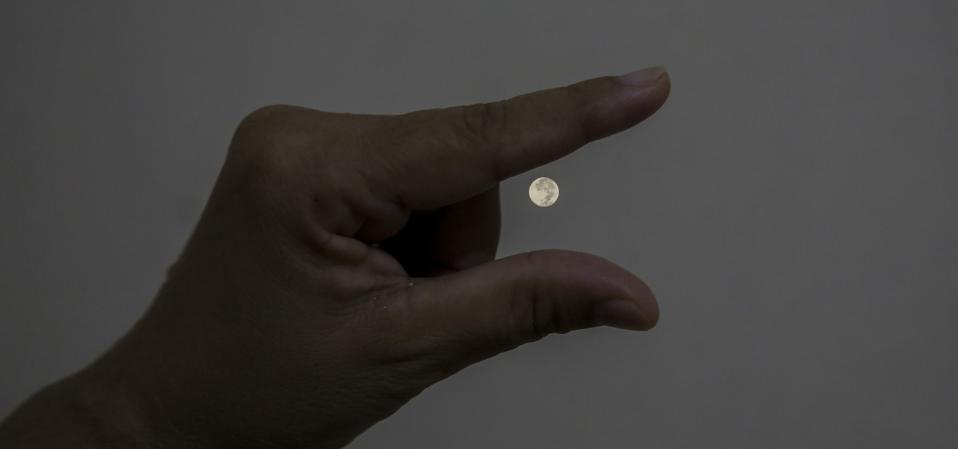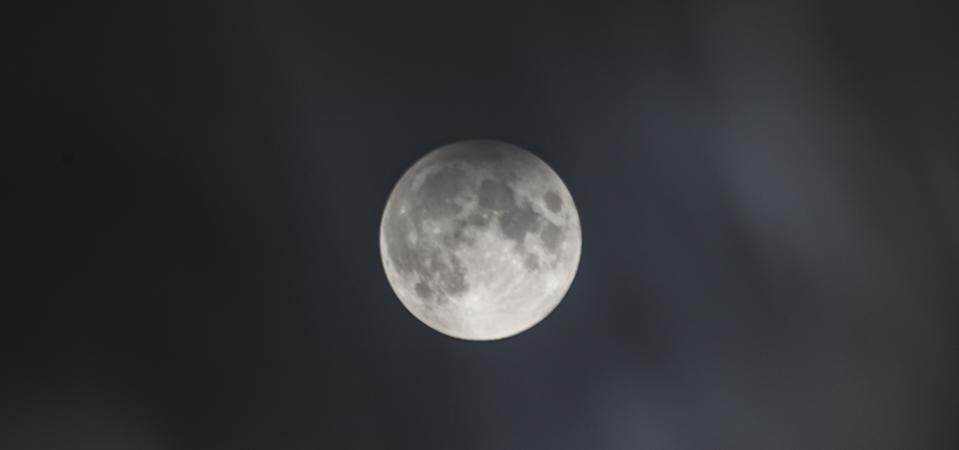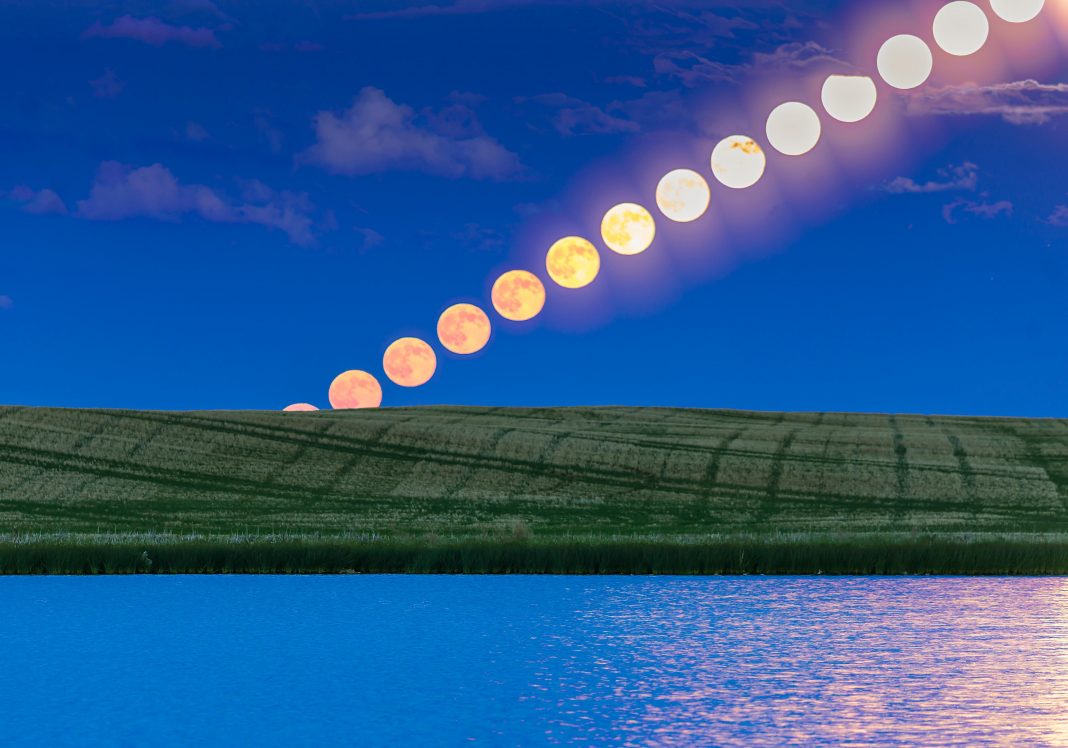
The rising Full Moon of June, dubbed the ÒStrawberry MoonÓ in the media, as seen rising over a … [+]
Universal Images Group via Getty Images
For those of us in the northern hemisphere, June is all about the Moon. For starters, the nights never get shorter; on June 20, 2020 the “summer” solstice will occur—the longest day, and shortest night, of the year. That makes stargazing in summer a late-night activity only, but that’s not the only reason to turn your gaze to the Moon.
In fact, the Moon in June is perfectly placed for easy observation because—as seen from northerly latitudes—it appears as low to the southern horizon as it ever gets, at least around the full Moon. As a consequence it often seems giant-sized.
Add a stunning “Strawberry Moon Eclipse” and a “Ring of Fire” annular solar eclipse (for some parts of the world only) and you’ve got yourself the perfect month for moon-gazing.
Here’s why June—and summer, in general—is worth turning into a lunar lockdown.

The first evening of the new year was beckoned in by a spectacular supermoon, rising up from behind … [+]
G.Hüdepohl (atacamaphoto.com)/ESO
Why does the Moon hang lower in summer?
A low-hanging Moon is when our satellite rises and sets without getting far above the southern horizon. It’s all about geometrics. It all depends on where you are on Earth, a planet that revolves on a titled axis, but the general explanation is simple; the Moon is low and the night is short because the Sun is high and the day is long. The Moon orbits roughly on the same plane as the Sun—the ecliptic—which is high in the day and low in the night as seen from northerly latitudes at this time of year.
In the northern hemisphere, the Sun reaches its highest point of the year at midday on the date of the summer solstice—June 20, 2020—so around the time of a full Moon our satellite seems at its lowest.

JAKARTA, INDONESIA – MAY 8, 2020: Photos taken by double exposure shoot technique show supermoon … [+]
Barcroft Media via Getty Images
What is the ‘Moon illusion?’
One delightful consequence of a low-hanging Moon is that it often appears to look unnaturally massive. It’s not. It’s just an illusion. Particularly when it’s a full Moon, our satellite appears to be bigger as it moves closer to the horizon. That’s to do with how human’s perceive size; it’s all relative, and when the Moon is seen close to buildings, trees and mountains, it just seems bigger. Some people cite the Ponzo Illusion as the reason.

An example of the Ponzo illusion. Both of the horizontal yellow lines are the same length.
NASA
It’s easier to appreciate this “Moon illusion” in summer because when the Moon is almost full on the several evenings either side of the official “full” Moon phase, it’s much lower on the horizon that at other times of year.
So particularly during the fuller phases of the Moon—First Quarter, Full and Last Quarter—can make the Moon seem bigger than it really is.

NASA. Cycle of the moon. A circle of the growing moon.
Getty
Phases of the Moon in June
It takes the Moon 29.5 days to complete one orbit around the Earth. During that time it displays different phases as the Sun’s illumination of it changes from our point of view on Earth.
- Friday, June 5: Full Moon—the “Strawberry Moon Eclipse”
- Saturday, June 13: Last Quarter Moon
- Sunday, June 21: New Moon—also a “Ring of Fire Eclipse” in some parts of the world (it’s got nothing to do with the eclipse, but do look out for a delicate crescent Moon just after sunset from June 22—June 25)
- Sunday, June 28: First Quarter Moon

penumbral eclipse 2017.
Jamie Carter
When is the ‘Strawberry Moon Eclipse?’
This is a penumbral lunar eclipse, during which 57% of the Moon will be covered by Earth’s penumbra—its outer shadow—but only as seen from Europe, Asia, Africa and Australia. It’s a pretty subtle event, as is July 5’s “Thunder Moon Eclipse,” which will be visible in South America, North America and Africa, when just 35% of the Moon will be covered by Earth’s penumbra.
Wherever you are, just concentrate on enjoying the fabulously low, large-looking full Moon and forget the “eclipse” aspect of it. After all, this the latest-rising, largest-looking full Moon of the year.

Annular solar eclipse of 2012.
Getty
When is the ‘Ring of Fire Eclipse?’
Eclipse-chasers are rather upset about this one. An annular solar eclipse—caused by the New Moon blocking most, but not all, of the Sun’s disk—will cause a rare “ring of fire” eclipse on June 21, 2020. However, COVID-19 travel restrictions mean that only those that live permanently in the Congo, Democratic Republic of Congo, South Sudan, Ethiopia, Eritrea, Yemen, Oman, Pakistan, India, Tibet, China, Taiwan and Guam will get to see and experience it. This extra-special New Moon will block 99.5% of the Sun.
So this June, why not grab a pair of binoculars and a punnet of strawberries, and have a good, long look at a large, low “Strawberry Moon?” Not to do so would be sheer lunar-cy.
Disclaimer: I am the editor of WhenIsTheNextEclipse.com and author of “The Complete Guide To The Great North American Eclipse of April 8, 2024.”
Wishing you clear skies and wide eyes.









